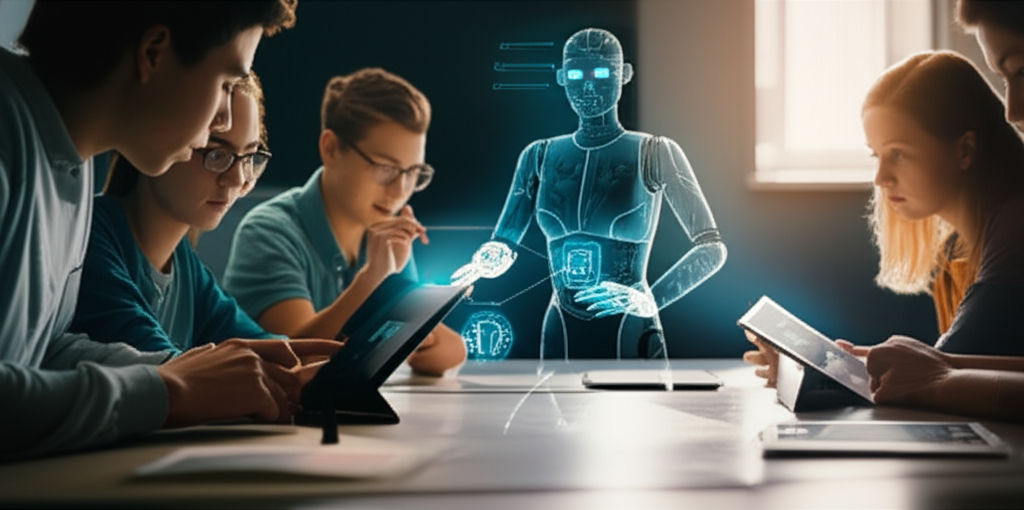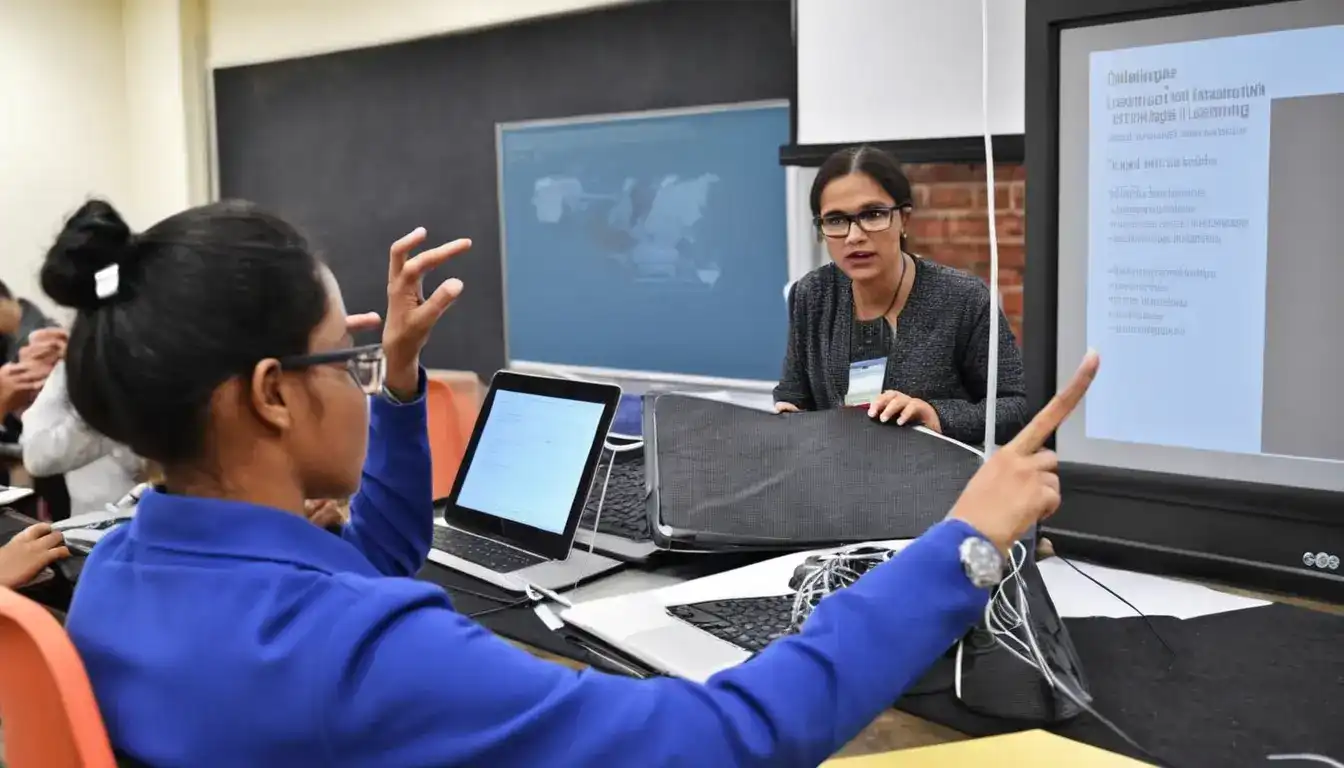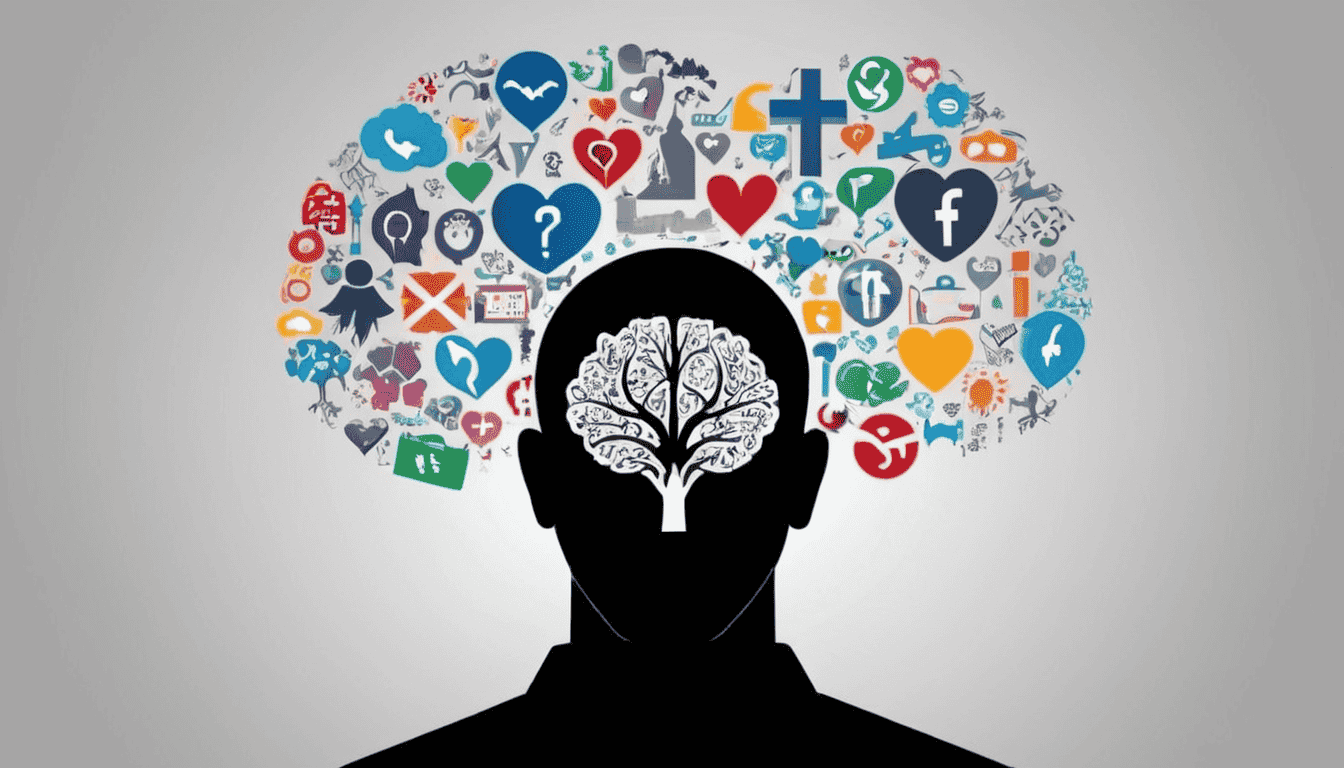Neuroscience Impact on Future Learning
Emily Willis
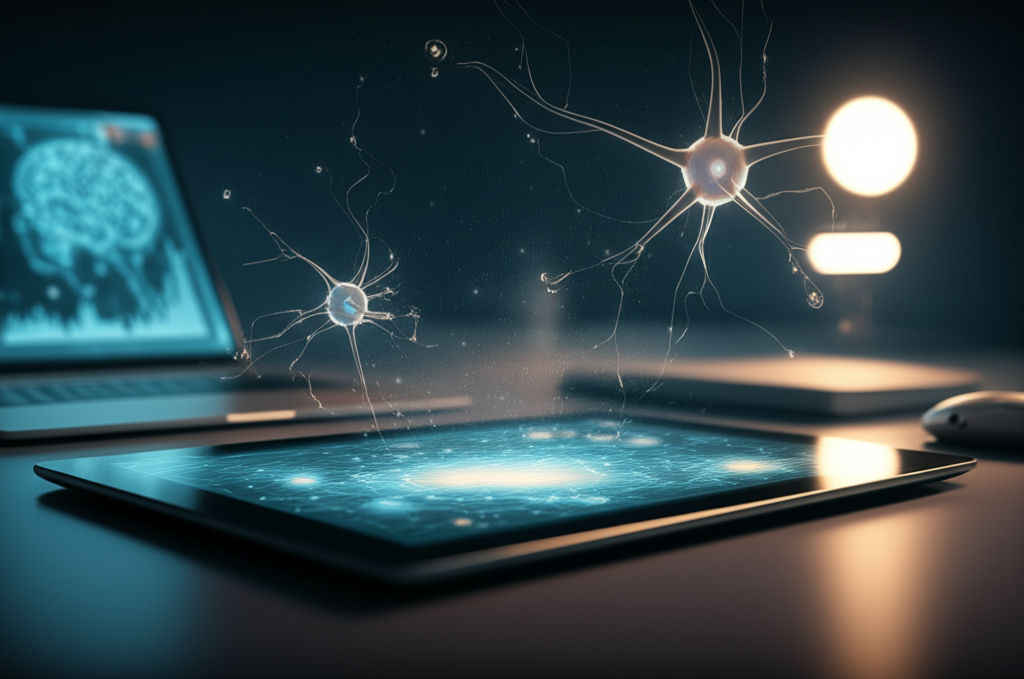
Photo: Neuroscience Impact on Future Learning
The Brain-Powered Future: How Neuroscience is Revolutionizing Learning
Imagine a world where learning isn't a chore, but an exciting journey perfectly tailored to how your brain works. What if education could genuinely unlock everyone's full potential, making complex subjects click and memory stick? This isn't science fiction; it's the exciting future being shaped by the powerful insights of neuroscience. By understanding the intricate workings of our brains, from individual neurons to vast networks, we're on the cusp of a learning revolution that promises to transform education for everyone.
For centuries, teaching methods relied on tradition and observation. But now, with advanced tools and a deeper understanding of the human brain, we can peek under the hood and see exactly how we learn. This knowledge is not just for scientists; it's for parents, students, educators, and anyone curious about optimizing their own learning potential. Let's dive into how brain science is paving the way for a more effective, engaging, and personalized learning experience.
What is Neuroscience and Why Does it Matter for Learning?
At its core, neuroscience is the scientific study of the nervous system, with a huge focus on the brain. It explores everything from the tiny electrical signals that neurons send to each other to how different brain regions work together to help us think, feel, and act. When we talk about neuroscience impact on future learning, we're essentially looking at how discoveries about the brain can inform and improve educational practices.
Think of your brain as the most complex supercomputer ever created. Every time you learn something new, your brain physically changes. Memories are encoded by these physical changes, meaning your brain is constantly being molded by your experiences and learning throughout your entire life. This incredible adaptability is a central concept in neuroscience and is key to understanding how we can learn better.
Key Neuroscience Discoveries Shaping Future Learning
The field of neuroscience has unveiled several groundbreaking insights that are directly impacting how we approach education and learning optimization.
Neuroplasticity: The Brain's Amazing Adaptability
Perhaps the most exciting discovery is neuroplasticity, the brain's incredible ability to change and adapt throughout life. It's not a fixed organ; it's constantly rewiring itself based on experiences, learning, and memory formation. This means that whether you're a child learning to read or an adult picking up a new skill, your brain is forming new connections and strengthening existing pathways. The principle of "use it or lose it" is particularly relevant here: the more you use particular brain pathways, the stronger they become. This concept empowers us to believe in our lifelong learning potential.
Memory Formation and Retrieval: Making Knowledge Stick
Neuroscience helps us understand how our brains encode, store, and retrieve information. Learning something new requires storing it in some form of memory for future use. Research shows that sleep plays a crucial role in memory consolidation, the process where newly acquired information is transformed into long-term memories. During sleep, especially slow-wave sleep (SWS), the brain actively reorganizes and strengthens these memory traces.
This insight suggests that cramming isn't the most effective strategy. Instead, spaced repetition, where you revisit material over extended periods, significantly improves memory. Active recall, like quizzing yourself, is also a powerful way to reinforce learning.
Attention and Focus: The Brain's Spotlight
In our increasingly distracted world, understanding attention is vital for effective learning. Neuroscience defines attention as the brain's ability to focus on specific stimuli or tasks while filtering out distractions. It's not a single process but involves multiple networks that develop throughout childhood and adolescence.
Research indicates that focused attention is essential for many cognitive processes, including learning, problem-solving, and decision-making. Distractions can drain cognitive energy and reduce our ability to retain information. Insights from neuroscience can lead to powerful intervention programs to improve children's attention in schools.
The Role of Emotion in Learning: Feeling is Believing
Emotions are not just background noise; they are deeply intertwined with learning and memory. Positive emotions like interest, surprise, and satisfaction can enhance motivation, curiosity, and engagement, making learning more desirable and fulfilling. Conversely, negative emotions such as stress, anxiety, or fear can hinder the learning process by blocking thoughts and impacting attention. When students care about what they're learning, their brains react in powerful ways, making the content more emotionally engaging.
Sleep and Learning: The Unsung Hero
We often underestimate the power of sleep, but neuroscience reveals its critical role in learning. As mentioned, sleep is integral to memory consolidation. Lack of sleep can impair both short-term and long-term memory, reducing learning abilities by as much as 40%. Getting enough quality sleep allows your brain to process new information and solidify it into lasting memories. This is why taking breaks and even short naps after deep learning sessions can be incredibly beneficial.
How Neuroscience is Transforming Educational Approaches
The insights from brain science are not just theoretical; they are leading to practical changes in how we teach and learn, pushing us toward a future of neuroeducation and more effective learning strategies.
Personalized Learning Pathways: Tailoring Education to You
One of the most promising applications of neuroscience is in personalized learning. By understanding individual brain differences and learning patterns, education can be tailored to each student's unique needs, cognitive capabilities, and learning styles. This approach can lead to more effective and engaging education, especially for neurodivergent students. What neuroscience can study in small groups, AI can implement in large populations, offering immense promise for personalized learning.
Brain-Based Learning Strategies: Practical Applications
Neuroscience informs brain-based learning strategies that align with how the brain naturally processes, organizes, and retains information. These include:
- Active Recall and Retrieval Practice: Instead of just rereading, actively testing yourself (e.g., flashcards, self-quizzing, brain dumps) strengthens memory pathways.
- Spaced Repetition: Spreading out learning sessions over time, rather than cramming, dramatically improves long-term retention.
- Interleaving: Mixing different subjects or topics during study sessions can improve understanding and retention, as it forces the brain to make more connections.
- Elaboration: Expanding on a concept by connecting it to prior knowledge, real-world examples, or explaining it in your own words helps solidify understanding.
- Movement and Brain Breaks: Incorporating physical activity or short breaks can boost alertness, focus, and allow the brain to consolidate information. Exercise increases proteins that help create and strengthen neural connections.
Technology and Neuroscience: A Powerful Partnership
The convergence of neuroscience and technology, particularly Artificial Intelligence (AI) in learning, is creating exciting new possibilities. AI can analyze vast amounts of data to identify individual learning patterns and adapt teaching methods in real-time.
- Adaptive Learning Platforms: AI-powered platforms can dynamically adjust to a student's progress and needs, providing tailored content and challenges.
- Neurofeedback Systems: These tools use real-time brain activity data to help adjust teaching methods, optimizing engagement and retention.
- Virtual Reality (VR) and Augmented Reality (AR): These immersive technologies can create engaging learning environments that align with how the brain naturally processes information, making learning more experiential and memorable.
Promoting a Growth Mindset: Believing in Your Brain
Neuroscience also reinforces the importance of a growth mindset – the belief that our abilities and intelligence can be developed through dedication and hard work. Understanding neuroplasticity directly supports this idea: your brain can grow and change. This empowers learners to embrace challenges, persist through difficulties, and view mistakes as opportunities for brain growth, rather than limitations.
Actionable Insights: Applying Neuroscience for Better Learning Today
You don't need to be a brain scientist to benefit from these discoveries! Here are practical steps for students, educators, and anyone looking to enhance their learning potential:
For Students: Supercharge Your Study Habits
- Prioritize Sleep: Aim for adequate, consistent sleep. Your brain consolidates memories and prepares for new learning during rest.
- Embrace Active Recall: Instead of just rereading notes, test yourself frequently. Use flashcards, explain concepts aloud, or try "brain dumps" where you write everything you remember about a topic.
- Space it Out: Don't cram! Break down study sessions into shorter, regular intervals over days or weeks. This "spaced repetition" is far more effective for long-term memory.
- Minimize Distractions: Create a dedicated learning environment. Turn off notifications, put your phone away, and focus on one task at a time to improve attention and retention.
- Connect New to Old: Relate new information to what you already know. The more connections your brain makes, the stronger the memory. Use analogies and real-world examples.
- Move Your Body: Short bursts of physical activity can boost alertness and focus, enhancing your brain'
Latest ✨
View AllAI is revolutionizing education! Unlock personalized learning, empower teachers, and create a truly accessible future for every student.
Emily Willis
The text discusses the importance of mental training and psychological strategies in enhancing athletes' performance. It covers various techniques such as goal setting, visualization, positive self-talk, mindfulness, and focus and concentration. The role of mental toughness in overcoming challenges and performance anxiety is also highlighted. The benefits of mental training include improved performance consistency, confidence, stress management, and faster recovery from setbacks. The text emphasizes the need for coaches and sports psychologists to integrate mental training into athletic programs and provides real-life examples of successful athletes who have benefited from mental preparation. In conclusion, the text encourages athletes to embrace mental training to unlock their peak performance potential and thrive in competitive sports environments.
Emily Willis
Global citizenship: The core future education for shared humanity & interconnectedness. Build a just, peaceful, and sustainable world.
Emily Willis
recent surge in inflation globally, leading to rising prices of goods and services and impacting people's purchasing power and economic stability.
Emily Willis
Business
View All
June 9, 2025
Succeed with SaaS Business ModelMaster the SaaS business model! This guide reveals strategies for building a thriving enterprise, from understanding the landscape to achieving product-market f...
Emily Willis
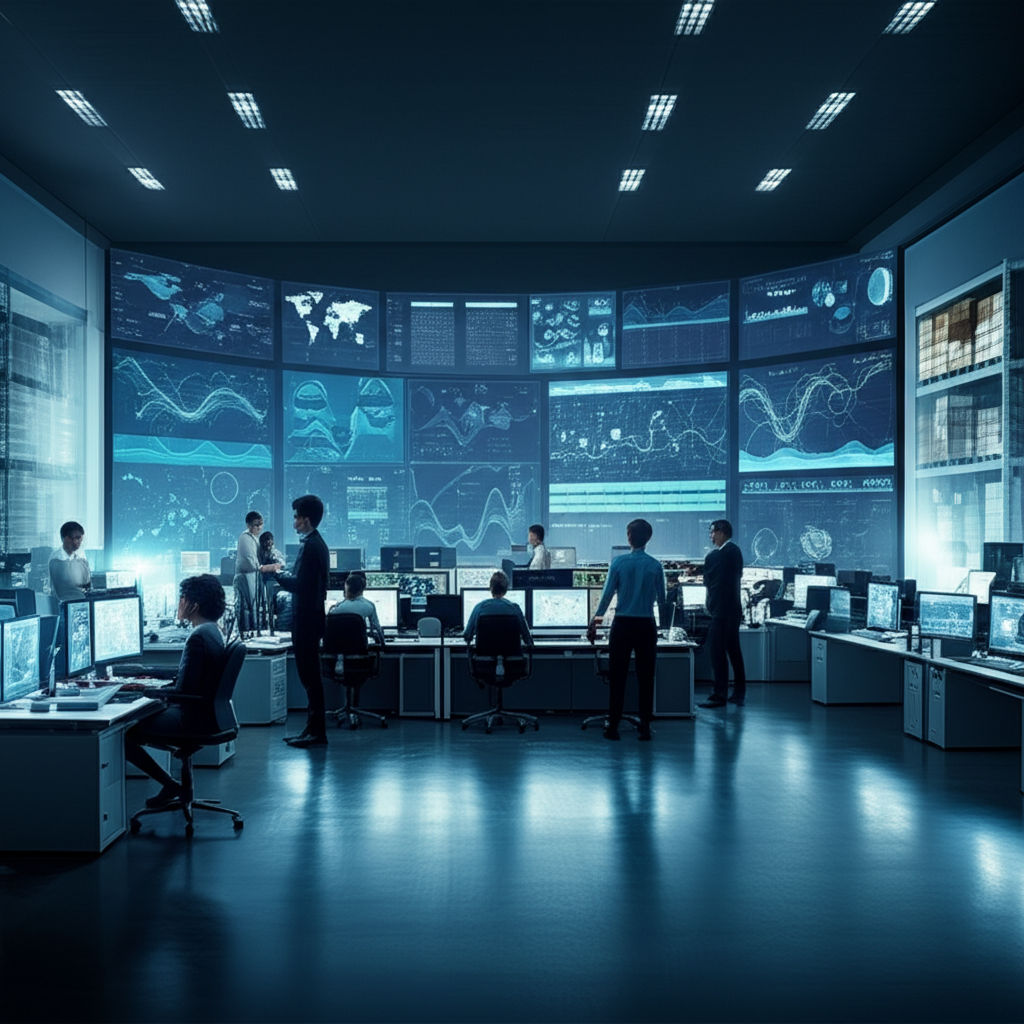
June 8, 2025
Optimize Your Supply ChainOptimize your supply chain for business success! Learn strategies to cut costs, boost efficiency, & satisfy customers with our comprehensive guide.
Emily Willis

August 5, 2024
Tips for Maintaining a Balance Between Work and Personal LifeAchieving a healthy work-life balance is essential for overall well-being, productivity, and happiness. Setting clear boundaries, prioritizing self-care, managing time effectively, nurturing relationships, and learning to unplug are key strategies to maintain this balance. It is important to communicate your needs effectively, seek support, and delegate tasks when necessary.
Emily Willis
Economy
View AllExplore the vital role of financial regulators, the unsung heroes who protect your savings, prevent crises, and ensure a stable, thriving economy.
Read MoreUnlock the secret of price elasticity! Learn how price changes affect demand, revenue, and your everyday purchasing decisions. Essential for businesses & shoppe...
Read MoreInfrastructure development is crucial for driving economic growth and regional integration by improving connectivity, facilitating trade, and enhancing quality of life. Investments in transportation networks and digital infrastructure support businesses in accessing larger markets and capitalizing on trade opportunities. Well-developed infrastructure simplifies trade processes and attracts industries to specific regions, promoting economic development. Access to essential services and urban infrastructure improves quality of life and fosters sustainable urbanization. Green infrastructure projects support environmental conservation and contribute to sustainable development goals. Overall, strategic investments in infrastructure are essential for building resilient, inclusive, and prosperous communities in the global economy.
Read MoreEntertainment
View All
August 5, 2024
Video Games: Enduring Appeal, Immersive Worlds, and Diverse Genresenduring appeal of video games, highlighting their ability to transport players to fantastical realms, challenge their minds, and foster connections with others. It explores the magic of immersive worlds, the vast array of genres available, and the social power of gaming.
Emily Willis

August 4, 2024
Social Media's Influence on Celebrity Culture: Trends and ImpactsSocial media has revolutionized celebrity culture by enabling direct fan engagement, promoting authenticity, and creating new trends such as influencer marketing and digital content creation.
Emily Willis

August 4, 2024
Recommended Movies and TV Series to Watch This Yearlist of recommended movies and TV series to watch this year. The movies include "Dune: Part Two," "Spider-Man: No Way Home," "The French Dispatch," "No Time to Die," and "Encanto." The TV series include "Stranger Things: Season 4," "The Mandalorian: Season 3," "The Witcher: Season 2," "Ted Lasso: Season 3," and "Loki: Season 2." Each entry includes reasons to watch, such as stellar cast, visually stunning cinematography, engaging plot, and character development.
Emily Willis
Health
View AllQuality sleep is essential for overall health and well-being, impacting physical, cognitive and emotional functioning. Lack of quality sleep can lead to a variety of health issues, including weakened immune function, heart problems, weight gain and cognitive impairment.
Emily Willis
Heart disease is a leading cause of death globally, but early detection and prevention strategies can reduce its impact. This article discusses the importance of early detection, common risk factors, preventive measures, and lifestyle changes for heart health. Understanding heart disease, recognizing symptoms, and undergoing regular screenings are crucial. Common risk factors include high blood pressure, high cholesterol, diabetes, smoking, obesity, physical inactivity, and family history. Symptoms of heart disease include chest pain, shortness of breath, fatigue, irregular heartbeat, and swelling. Diagnostic tests and screenings include blood pressure measurement, cholesterol screening, blood glucose test, ECG, stress test, and imaging tests. Preventive measures include adopting a heart-healthy diet, regular physical activity, quitting smoking, managing stress, maintaining a healthy weight, and limiting alcohol consumption. Medications and treatment options may be necessary for individuals at high risk or diagnosed with heart disease.
Emily Willis
significance of mental health awareness in today's fast-paced world. It discusses the importance of understanding mental health, breaking down stigma, and promoting positive mental health practices.
Emily Willis
Trending 🔥
View All
1
2
4
5
6
8
9
10
Sports
View AllAugust 4, 2024
The Importance of Mental Training and Psychological Strategies in Helping Athletes Reach Their Peak Performance on the Field
Read MoreAugust 4, 2024
Sports Technology Innovation: Revolutionizing Training and Performance Analysis
Read MoreAugust 5, 2024
Inclusive Playing Field: Creating a Welcoming and Accessible Sports Environment
Read MoreAugust 4, 2024
Benefits of Cross Training for Athletes: Improves Performance and Prevents Injuries
Read MoreTechnology
View All
August 5, 2024
The Impact of AI on the Future of Work and Education
AI is rapidly advancing and reshaping industries, economies, and societies, especially in the areas of employment and education. In the workplace, AI is changing roles through automation and creating new job opportunities. The future of work will most likely involve collaboration between humans and AI, requiring workers to develop new skills and engage in lifelong learning.
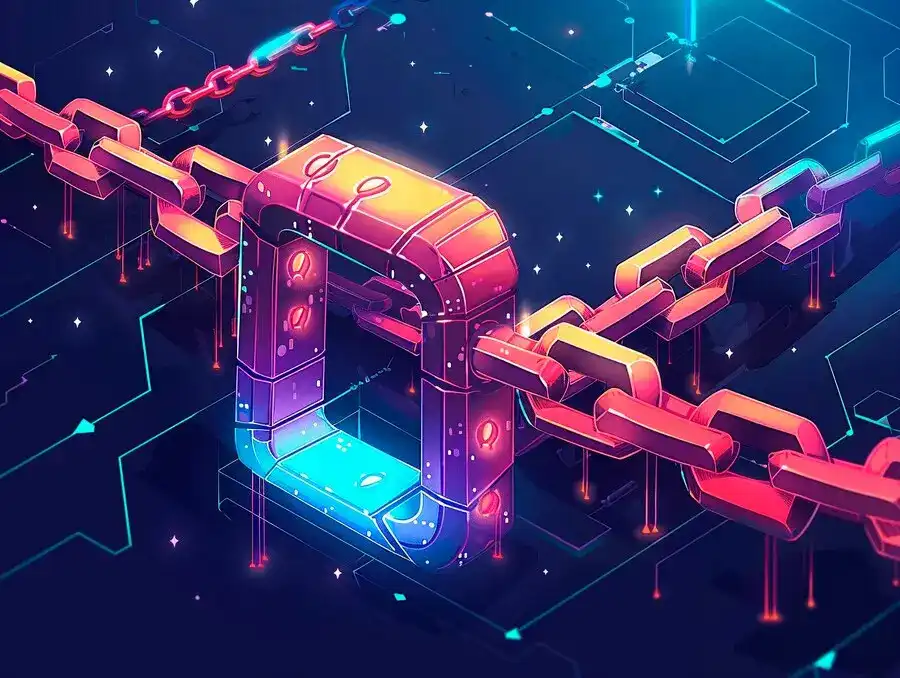
August 5, 2024
Challenges and Barriers in Adopting Blockchain Technology
Blockchain technology has the potential to revolutionize industries with its decentralized and transparent nature, but widespread adoption faces challenges such as scalability issues, interoperability, security concerns, regulatory uncertainty, lack of standards, cost and resource intensiveness, and user experience and education.

August 4, 2024
Data Security in the Digital Era: Challenges and Solutions
importance of data security in the digital age, highlighting challenges such as cyberattacks, human error, weak passwords, and outdated systems. It also provides solutions to enhance data security, including encryption, strong password policies, multi-factor authentication, regular software updates, employee training, access controls, data backup, incident response plans, security audits, and advanced security technologies. These measures are essential for protecting sensitive information and preventing unauthorized access and breaches.

August 4, 2024
Sustainable Technology: The Key to a Greener Future
sustainable technology in addressing environmental challenges and creating a more sustainable future.
